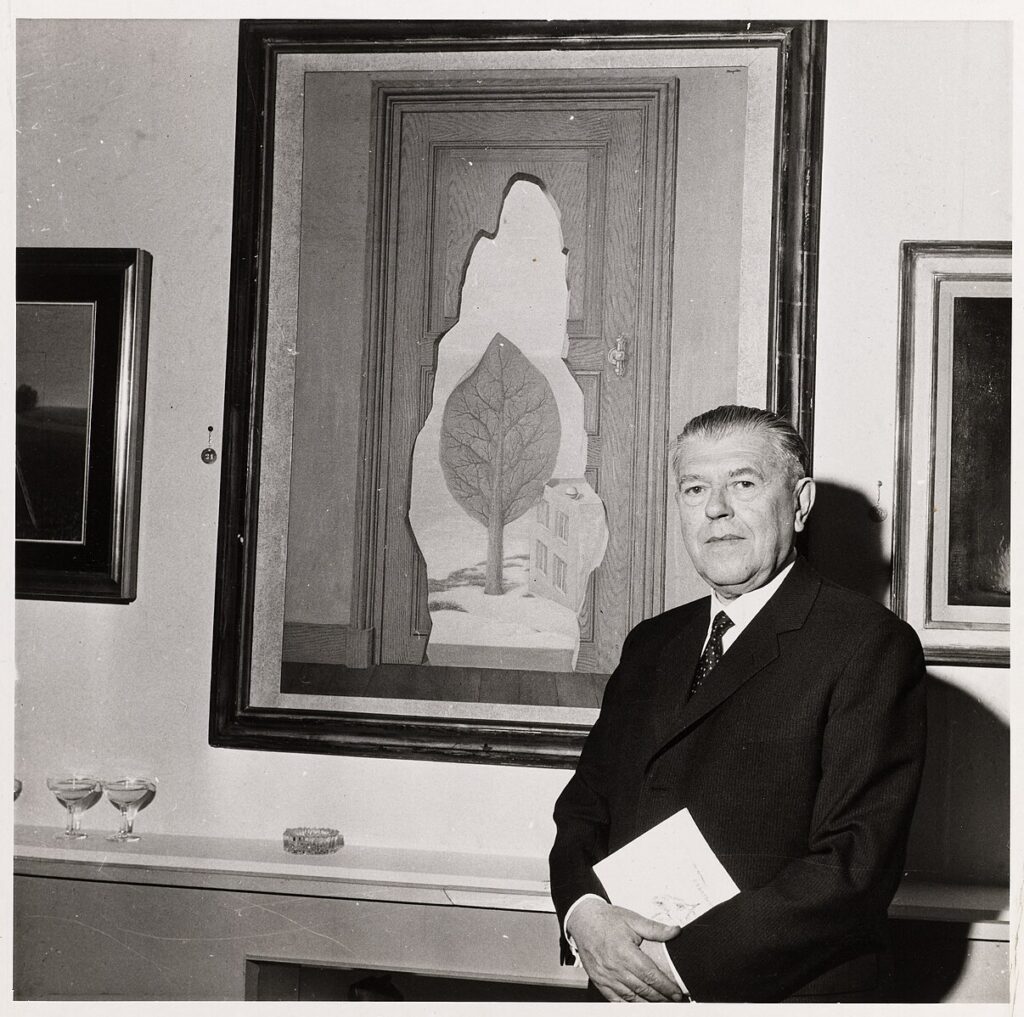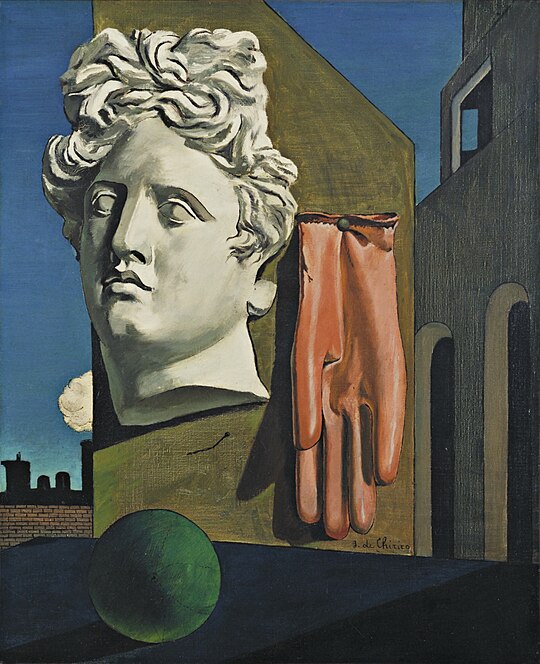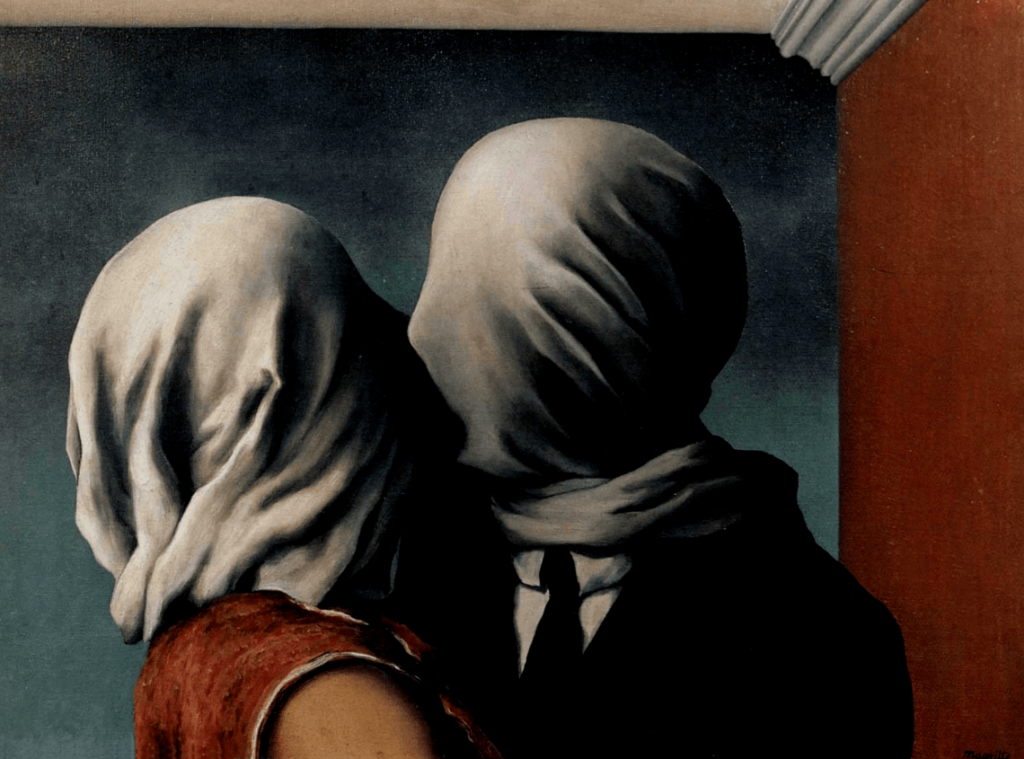What do apples, the female torso, and a bowler hat all have in common? On the surface, there’s nothing to link these three things together.
But add one brilliant man–René Magritte–to the mix, and they become surrealist art.
René Magritte is the mastermind behind many now-famous and beloved surrealist works, such as The Lovers and The Treachery of Images. He is considered one of the greatest artists of the surrealist movement.
His style was a precursor to pop art. His paintings are now revered by critics worldwide for their ability to confuse our expectations about the real world, and what we consider to be common sense.
In this article, we’ll look deeper into the life of René Magritte, and his art that charmed and confused the world.

The Early Life of René Magritte
Born in Lessines, Belgium in 1898, René Magritte was the son of Léopold and Régina Magritte. His mother was a milliner, while his father was a tailor.
His early years were not easy. René’s mother was plagued by mental illness, and on February 24, 1912, she drowned herself in the River Sambre.
As the story goes, René was there when his mother’s body was discovered almost a month later on March 12. Her dress was over her face when she was brought up from the water.
This theme would be present in some of René’s future works, even if there is no concrete evidence of him being present during the body recovery.
René Magritte’s Career in Art: First Paintings and Inspirations
As he grew older, René appeared to follow the path of an average life for a Belgian man. He attended his single year of compulsory military service in 1920.
Afterward, he would marry a young woman he had known since childhood, Georgette Berger.
His first job post-military would be at a wallpaper factory. But there was a spark of creativity in him that ached for more.
This desire to create art wasn’t out of nowhere. In 1915, he started painting, taking inspiration from the impressionist movement.
For the next two years, he would attend art school at Académie Royale des Beaux-Arts in Brussels but found no spark in the tutelage. Later, he apprenticed under artist and designer Gisbert Combaz and found the education to be more enlightening.
With Combaz, he would take an interest in Cubism and Futurism, and this would be reflected in his early work.
René Magritte and The Song of Love
In 1922, the same year that he married Georgette, René Magritte would have the next defining moment of his life. It was maybe the one that turned him towards the path of the art world.
While spending time with poet Marcel Lecomte, he was shown Giorgio de Chirico’s painting, The Song of Love. Chirico was an early surrealist and metaphysical painter, and the sight of the painting brought René to tears.
René himself described the moment as “one of the most moving moments of my life. My eyes saw thought for the first time.”

In 1926, Magritte would get his first break in the art world. It was in the form of a gallery contract with Galerie le Centaure in Brussels.
With this contract, he began to paint full-time. He put all his effort into his artwork and his ever-evolving style.
That same year, René Magritte painted his first painting in the surrealist style, The Lost Jockey. With this painting and some of his earlier works, he held his first exhibition in Brussels the following year.
Much to his dismay, it did abysmally with critics, and Magritte’s spirit was crushed.
René Magritte and Surrealism
By 1927, René Magritte was leaning heavily into a new style of painting. He moved from Brussels to Paris to join the French Surrealist movement.
His time in Paris would result in Magritte completing an enormous amount of paintings.
Surrealism is an art movement characterized by the exploration of the irrational. Surrealist artwork regularly defies logic and reality.
It combines the mundane with the strange, and using distortions to create unexpected imagery. Magritte flourished as a surrealist, harkening back to how moved he was by The Song of Love.
His pieces would often include the same objects–clouds, smoking pipes, bowler hats, hidden faces, and most famously, apples.
Magritte would experiment with other styles throughout his career, including a ‘Renoir period’ while he lived in German-occupied Belgium and a time studying architecture. But he always returned to the style that had once made him weep upon introduction–surrealism.
By the 1930s, he was beginning to find real success. He was having gallery showings in New York and London.
This good luck was put on hold due to the outbreak of World War II, where he would dip into his aforementioned ‘Renoir period.’ He would even produce forgeries of other famous paintings to make ends meet.
When he finally returned to surrealism, collectors were thrilled, and his return to the art world was considered a triumph.
Why is René Magritte So Important?
Like other Surrealist artists, René Magritte’s art still inspires artists of all sorts today. He was one of the main figures in the founding of the Surrealist movement.
His work both challenged and delighted critics and the public alike.
Magritte’s paintings didn’t exist to be pleasing to the eye–they existed to challenge perception and reality. They make the person viewing them think about, and sometimes even struggle with, what was being portrayed.
Today, his works can be seen in adverts, album covers, and book jackets. It features as plot points in books, and driving forces behind movies.
This ability to stick in the collective consciousness for so long after this death is exactly why René Magritte is such an important figure in art history.
René Magritte’s Most Famous Works
- The Treachery of Images (1929)- A painting of a pipe, with the words “This is not a pipe” written underneath.
- The Son of Man (1964)– A suited man with a bowler hat in front of the ocean, his face covered by a green apple.
- The Lovers (1928)- A pair of lovers embrace, their faces covered by fabric.
- Time Transfixed (1938)- A locomotive train emerging from a fireplace.
- The False Mirror (1928)- A giant eye with the sky reflected within.

References
“Who Was René Magritte and Why Is He Still So Important?”-Karen Chernick
“René Magritte”